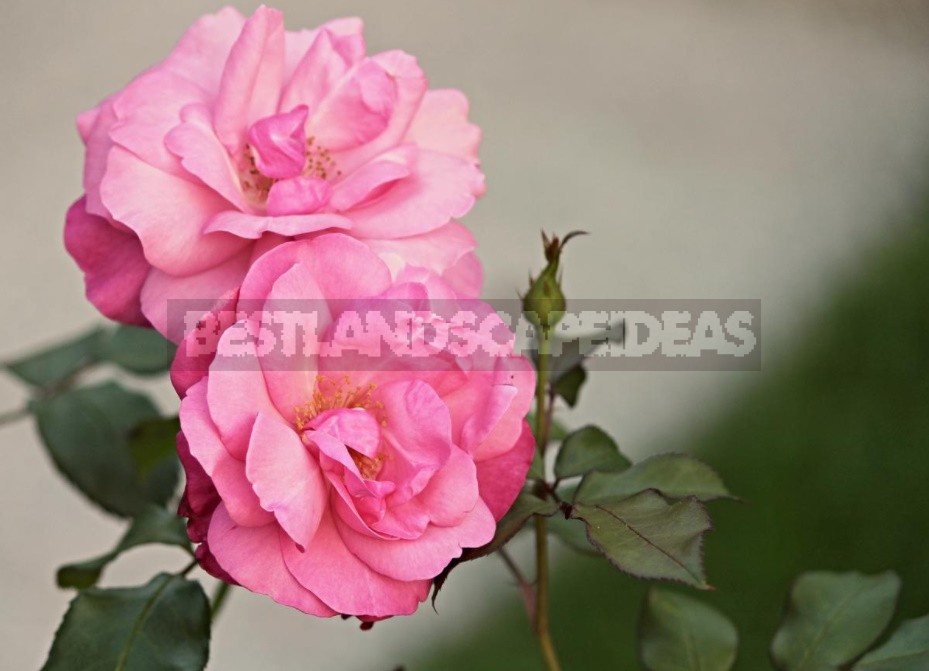
When choosing a rose variety, many lovers may deviate from their own ideal in terms of color, shape and size of the flower, aroma and even health, but they will not give up the belief that the main drawback of the variety is that when the flower opens, “the middle is visible”.
Expecting the impossible, we forget that we are only casual witnesses at this celebration of life. The corolla of the flower, consisting of petals, is so generously colored not for us at all, it attracts pollinating insects.
A bit of botany
The flower is the reproductive organ of angiosperms, and the main purpose of flowering is the implementation of pollination, fertilization, the formation of seeds and fruits. The flower of roses is bisexual, in the center of the open flower there is a pistil that leads to the female organ (ovary). The environment consists of stamens with anthers bearing the male principle (pollen).
Corolla
The corolla of the flower, consisting of petals, is the most noticeable part of the flower (for which roses are bred), characterized by a variety of colors, shapes and aromas. We admire it, and for pollinating insects it is a reference point in the search for food.
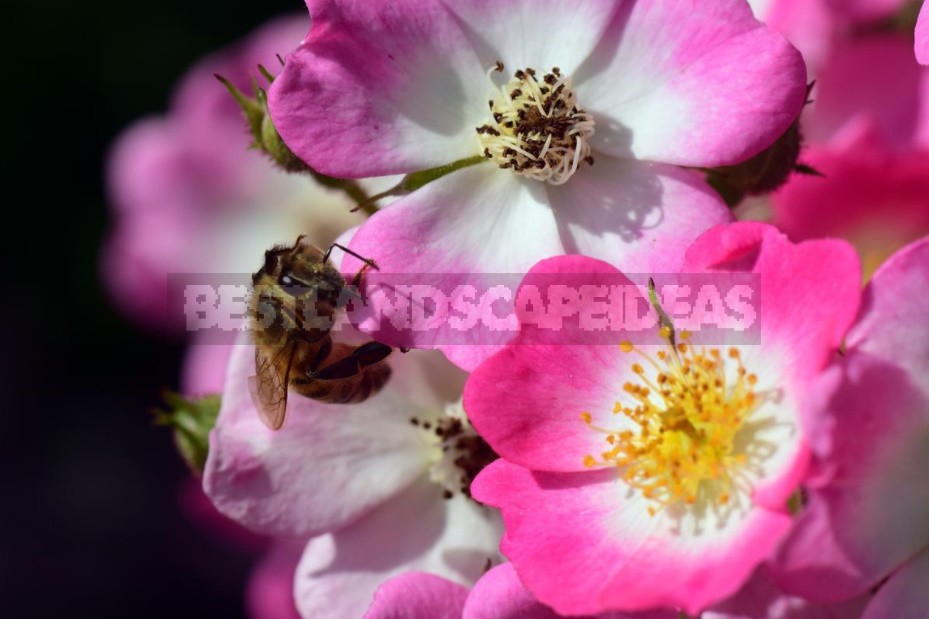
In addition, the corolla protects the pistil and stamens inside the flower from rain, overheating and, closing at night, prevents them from cooling and damage by cold dew. Observe some varieties with simple flowers (‘Siesta’, ‘Pierre Gagnaire’), when the newly opened flowers in the evening again fold their petals into elegant caps that protect the stamens.
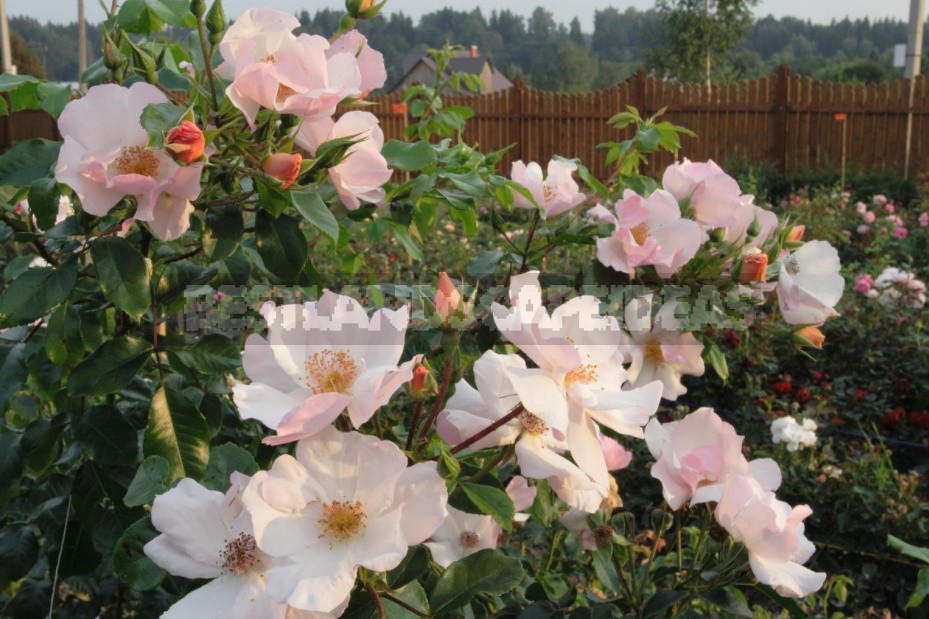
Pollination
In nature, insects are pollinators, carrying pollen from one flower to the other, carry out pollination. Cross-pollination by insects is called entomophilia (from Greek. éntoma-insects and philía-love).
This is the most common method of pollination, insects pollinate about 70% of flowering plants. They visit the flowers for food (nectar and pollen) and in search of a mate during the mating season. To get food for themselves, insects fly around hundreds of flowers. It is not for nothing that they say about a hard-working person that he works like a bee.
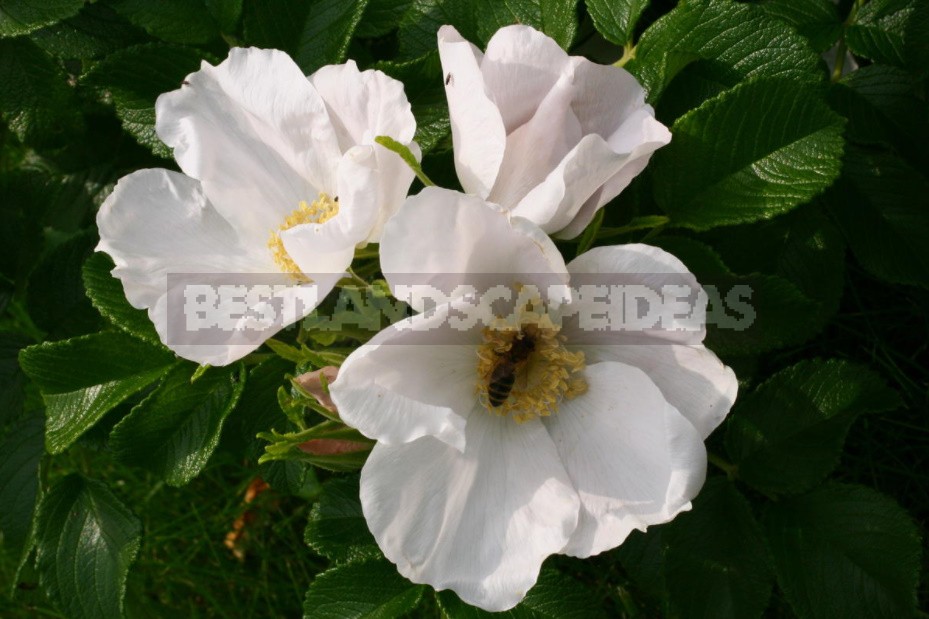
In the breeding of roses, of course, they do not rely on bees, but develop special crossing programs, and pollen from one plant to another is transferred by people with brushes, and the pollinated flower is isolated to exclude the interference of chance, including bees.
Stamens
The pistils can only be seen at close range, and the elegant bundle of stamens is an outwardly integral part of the flower. The number of stamens in each flower is not less than 50, even record holders are known. Thus, in R. bracteata, the number of stamens can reach 300-400 pcs. In wild species, they develop normally, and in garden roses (especially in thick-masked varieties) they are often deformed, sometimes turning into petals.
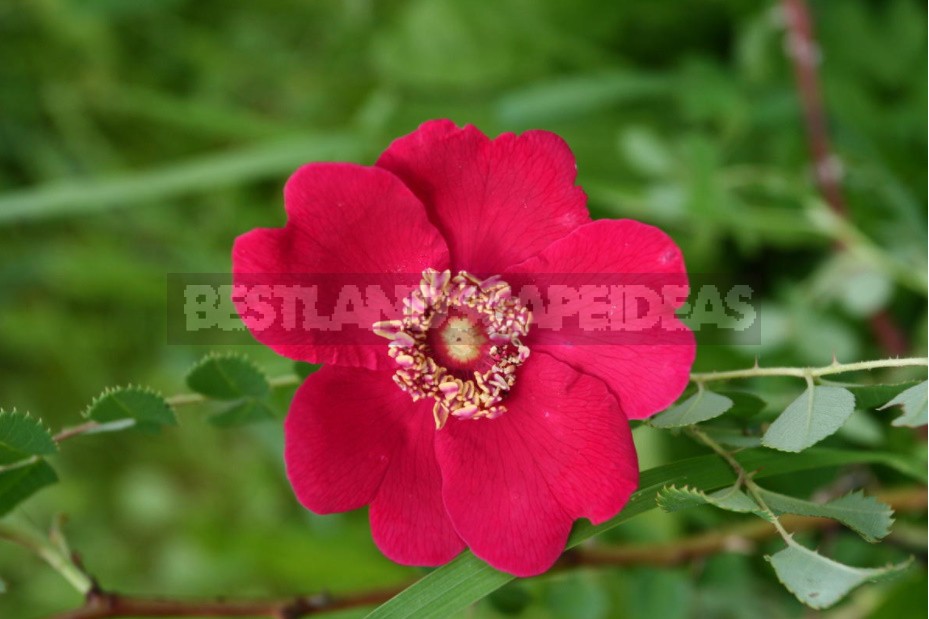
Always when describing a rose, the stamens are reduced to a bundle, although they are arranged in rings. The most surprising arrangement of stamens I noticed in the species rose R. moyesii. Take a closer look at the flower, pay attention to how the flower is decorated with a neat wreath of stamens. Remove this decoration — and the flower will immediately become nondescript.
Anthers
It is interesting to look even at anthers: they hide pollen in tiny devices in the form of boxes of various shapes, which, drying out, open at the “seams” and scatter pollen.
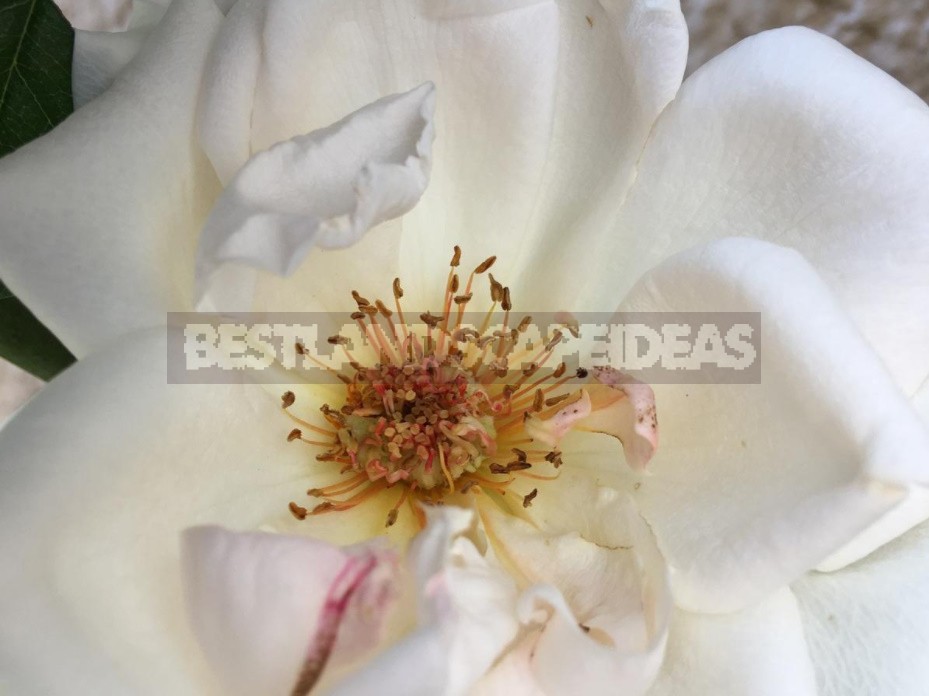
Pollen grains are very small, resembling fine flour. Bumblebees in their furry coats and bees, bathing in the stamens, get dirty with pollen and “transport” it on themselves to other flowers. Not every grain will fall on fertile ground, but, as the results of evolution show, there is always a chance.
Staminate filaments
Staminate filaments in different varieties have different lengths and in the mature stage are mostly yellow in color (from pale to thick golden), so exceptions to this rule can attract attention.
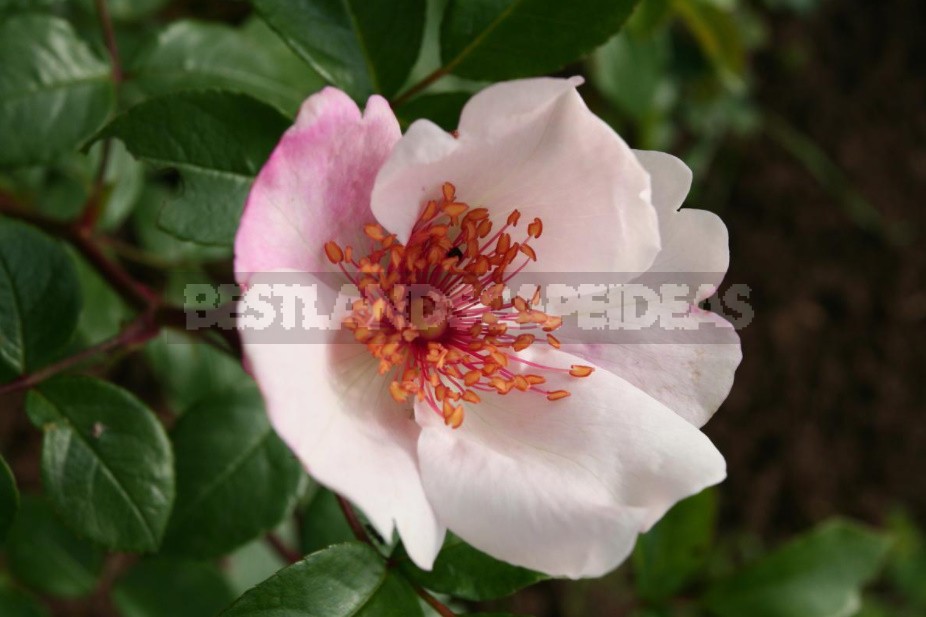
For example, the five-petal beauty ‘Astronomia’ (Meilland, 2006), has red staminate filaments. It is possible that some of the seven awards received at international competitions are related to this distinction. The variety has many advantages (beautiful foliage, balanced bush shape, excellent health), but the red stamens give it novelty and charm.
A little bit about ecology
I do not know people who would not be delighted with bees and bumblebees bathing in stamens. Of course, there are other animals, smaller ones, and Cetoniinae sleep in the flowers all day, causing some damage to the decorativeness. Clumsy bumblebees give special pleasure.
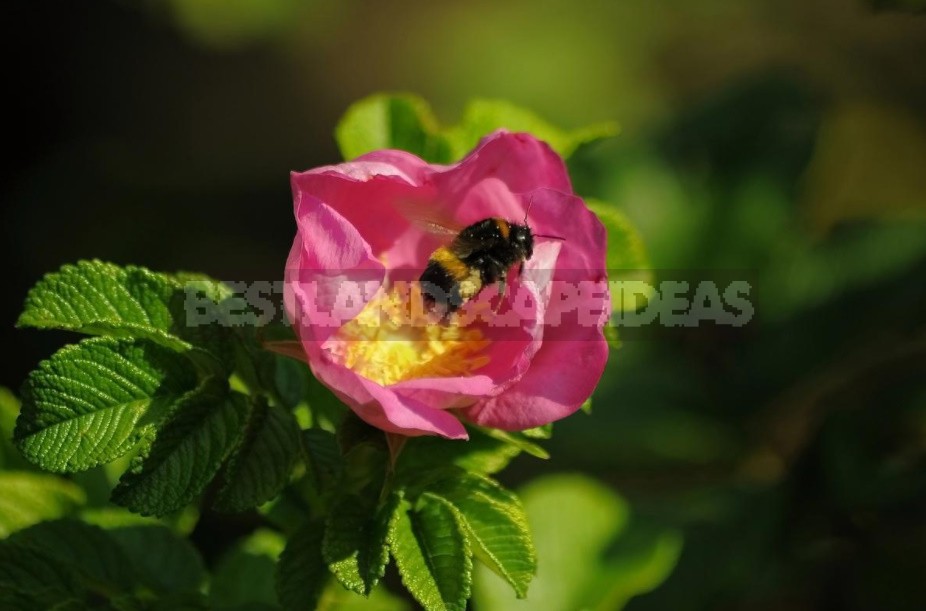
Priorities of the new century in rose breeding
Unlike the last century, where new products shone with new colors, sizes and shapes of terry flowers, today in the selection of roses there was a consumer’s request for unpretentious varieties. The most important priority in achieving this goal is disease resistance. Breeders are working in this direction, but you need to understand that on this path, losses in the size and double color of the flower, color scheme and smell are still inevitable. Those who strive for unpretentious varieties, you need to get used to the new look of roses and look closely at the stamens.

In the near future, I think, the fashion for roses created “according to the patterns of nature” will be formed, and the boom in thick-masked roses of historical appearance will pass. Of course, catalogs will offer a variety of varieties, but the main demand will shift in the opposite direction. The country is conquered by thick-masked roses, all in a row, and this phenomenon amazes me. In our conditions, I am sure, they do not have long-term prospects. Of course, there will be some better and healthier varieties, but companies will lose such mass sales.
The complexity of growing bulky and crumbling bushes, the loss of whole waves of flowering due to gray rot, the tendency to rust and other problems will lead to a rethinking of the choice, including in relation to naked stamens. Of course, I am not a prophet, but I think that lovers will strive to get the joy of growing roses and get away from unnecessary worries.
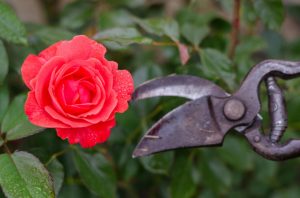


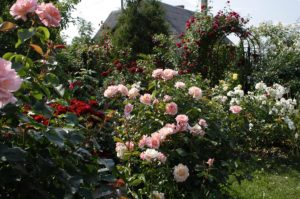
Leave a Reply